Journal of Tourism & Hospitality
Open Access
ISSN: 2167-0269
+44 1300 500008
ISSN: 2167-0269
+44 1300 500008
Research Article - (2020)Volume 9, Issue 1
The nationwide battlefields are the important tourist attractions like Adawa of the Ethiopia. Menilek’s victory at Adwa not only preserved Ethiopian independence in the era of the Scramble for Africa, but gave his country greatly enhanced international recognition. Enda-Eyesus battlefield is pre Adawa victory during the struggle in1896. The place is historical heritage for Ethiopians and all black people in the world. It has a potential to be tourist destination. The main objective of the study was to investigate challenges of community inclusive heritage tourism development at Enda-Eyesus battlefield of the pre-Adawa victory in the first Ethiopia-Italian war (1895-96). Heritage tourism at Enda-Eyesus battlefield can provide opportunities in income generation however; the communities are not beneficiaries of the opportunities. In the investigation, mixed approaches qualitative and quantitative were employed. Questionnaires, interviews, focus group discussions, and library works were used as primary and secondary data gathering methods. Finding of the study verify that, the communities are not adequately benefited from opportunities due to confront or challenge. The challenges have identified and described with details in the study.
Community; Enda-Eyesus Battlefield; Heritage tourism
Heritage tourism involves visiting places that are significant to the past or present cultural identity of a particular group of people and individuals. Heritage tourism is the highest intensifying segments of the tourism industry globally [1-3]. Visiting historical (heritage sites) is a quite popular tourist activity among tourists in the globe [4]. Heritage tourism is important in giving individual and community’s confidence and strengthening the identity beyond its economic benefit [5]. It provides an opportunity for people to experience their culture, find out about, to extend their education or to enjoy historical buildings (places) along with care for significant historical places wisely [1,6]. And, it becomes an imperative economic option drawing large numbers of tourists for the development of communities [7,8]. The most important commemorative battlefields are historical sites and heritages either in national or international echelon. Battlefields are traveler destinations moreover played an important role as an attraction in growing of tourist industry while a heritage [9]. In benefiting of the communities through heritage tourism, the public empowerment is a technique for economy development. Though, the masses are not involving in heritage tourism activities due to not have investigations and developments in community inclusive tourism [10]. The communities in the developing countries are not participant due lacking of desirable awareness and insufficient involvement of experts in the industry. Ethiopia is one of the developing country in Africa a proficient with an assortment of natural and cultural heritages which are very impressing attractions from north to south and east to west. Foreign visitors were interested in Ethiopian tourism attractions and have been increasing since Menilik’s (II) time after the victory of Adawa in 1896 at Tigray [11]. Tigray province is the northern part of Ethiopia with its Christian tradition, stone inscriptions, battlefields, monuments, and vernacular architectures, landscapes which are paramount tourist destination which can be economic sources for the community. However the society is not beneficial from the heritage tourism resources due to challenges. This study focused on investigating challenges of community inclusive heritage tourism development in a case study of Enda-Eyesus battlefield of the pre-Adawa victory.
Geo-environmental setting of the study area
Tigray is the northern highlands of Ethiopian. It has a cool and semi arid climates. The low lands annual average temperature of the region is about 26°c and 22°c the high land. The region characterized by divers’ peak highland and hill areas. Mekelle is one among the historical towns of Abyssinia found in Tigray province and it was the capital of Ethiopian during the reign of Emperor Yohannes IV (1868-1888). The city was also the center of his son call Ras Mengesha Yohannes IV’s. Mekelle is located about 778 km from Addis Ababa with absolute location of 13030ʹ N Latitude and 39030ʹE Longitude. As presented on the map (Figure 1), the city has seven sub-cities. The yearly average rainfall of the city is 511 mm from June to September. Mekelle was occupied by the Italian and it was an important site during the war 1895-96. The Italian army was established a very strong fort at Enda-Eyesus near to the Church. At Enda-Eyesus battlefield, the black force was over the white and it became the pre-Adawa victory. The battlefield is historical place and heritage for memorization. The absolute location of Enda-Eyesus battlefield is 13°29’11” N and 39°29'5"E with 2100-2260 m above sea level. It placed on hill and has 3km distance in the east of Mekelle.
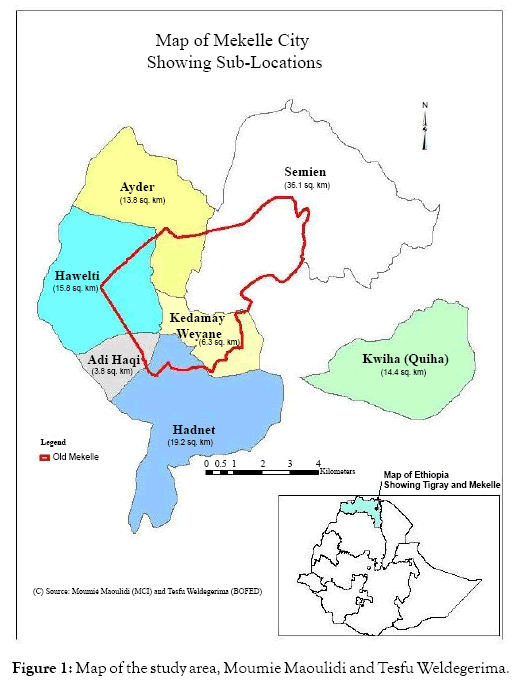
Figure 1: Map of the study area, Moumie Maoulidi and Tesfu Weldegerima.
Research design
Both quantitative and qualitative approaches were employed in the instigation of challenges of community inclusive heritage tourism development. To achieve the objectives and to come up with feasible findings, primary and secondary data were gathered. Structured and semi-structured face–to-face interviews with informants , free focus group discussion, personal observation were applied among local people, tourism experts and tour guides with help of formatted open and closed-ended questionnaires by considering objectives of the study as primary besides document analysis scheme. During the discussions, notes and voice recorder were used to document ideas and information. Publish and unpublished secondary data were used to the background information of the study and historical background of the place. The targeted populations for this research were comprised; tourism experts, tour guides, local community, and private business sectors. Purposive sampling technique and sample size used and the respondents were taken from the targeted population and respondents of the study were selected purposefully to gather relevant data. Finally, the collected data analyzed via text analysis and numerical analysis with the help of package for social science system (SPSS) descriptively using tables, and diagram and graphs.
Respondents Gender Composition: The following chart indicates that the percentage of the respondents in gender. It shows the participation both genders in data gathering for the investigation. Female respondents constitute 44.516% and males were 55.484%. This provided a multidirectional data from both genders. This balance was an important to identify their awareness towards heritage tourism and the perception in community inclusive tourism and its benefits considering the study area (Figure 2).
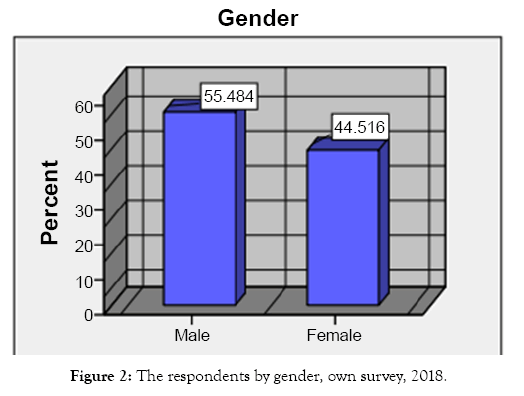
Figure 2: The respondents by gender, own survey, 2018.
The Respondents Age Group: Majority of the respondents were between the ages of (26-30) and (31-45) (37.42%) which constitute an adult age group and Age group from (15-20) constitute 4.5%, the age of 21-25 constitute 11.6%, as well as of age group of 26-30 constitute 28.38% and the age group from 46 and above constitute 18%. The data were collected from different age groups and it was very important and helpful to investigate challenges of community inclusive heritage tourism development at Enda-Eyesus battlefield and its historical background (Figure 3).
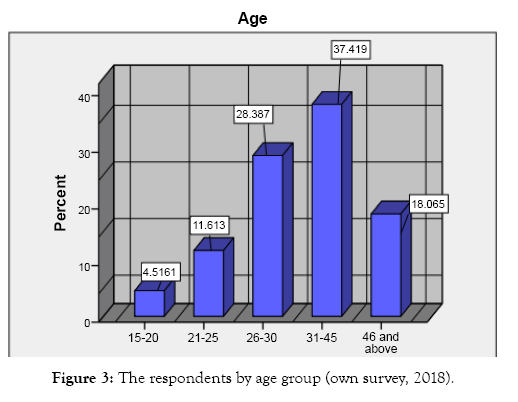
Figure 3: The respondents by age group (own survey, 2018).
The Respondents Educational Level: The objectives from the targeted populations were accentuating knowledge and understanding regarding tourism and its activities. Those with college and above constitute 58.71%, and the respondents with secondary and preparatory high school constitute 19.35%. Primary school constitutes 9.032%, church education constitutes 7.097% and illiterate constitutes 5.80%. Respondents with college and above educational level were the majority. Based on this level of educational qualifications, the information obtained in this regard can declare reliability (Figure 4).
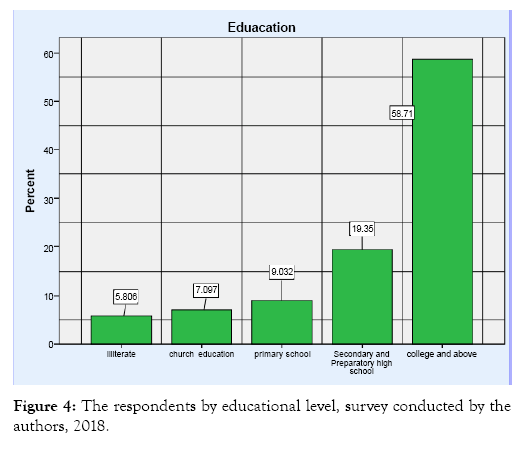
Figure 4: The respondents by educational level, survey conducted by the authors, 2018.
The Respondents Occupation: As indicated on the chart, 47.10% of the respondents were non-tourism employee in governmental institutions, 16.13% of the informants were in private sectors, and 14.19% of the respondents were tourism related private employees 13.55% of them were engaged with tourism business and 9.03 pensioners. This composition shows that, majority of the respondents were government employees and followed by tourism related private owners, worked in tourism industry, business owners respectively. This composition supports to find out more information on the subject of community inclusive heritage tourism (Figure 5).
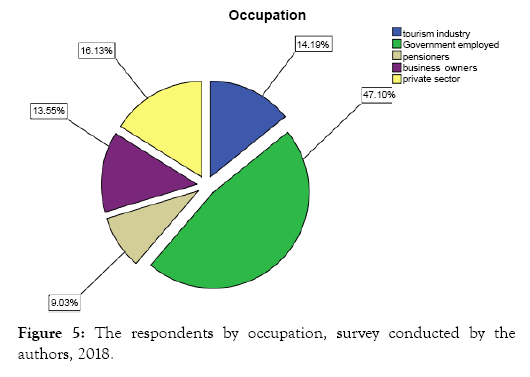
Figure 5: The respondents by occupation, survey conducted by the authors, 2018.
The battle of Enda-Eyesus
The victory of Adawa is the pride of black people all over the World and it is the most important event in the globe. The victory is black over the white at the land Ethiopia and aborted the ambitions of the Europeans cultural, historical, economical colonization in Africa. It is that the modern Italian military defeated by the Ethiopian force. Emmeye Menilek’s [II] victory at Adwa not only preserved Ethiopian independence in the era of the Scramble for Africa, but gave his country greatly enhanced international recognition [12]. His wife Taytu Betule has been applied a great military operation at Enda-Eyesus Mountain. Enda-Eyesus is a small hill found in eastern part of Mekelle Town (Figure 6). Situated at the edge of a peak overlooking the vast expanse of Mekelle plain. It is magnificent historical site and was also the Italian fort during the invasion. The Ras Mengesha Yohannes’s (IV) center[Mekelle] was occupied by Italians as far as the victory. Enda-Eyasus also called Fort di Galliano specifically located at the main campus of Mekelle Univertsity. The place was one of the battlefields during the first Ethiopia-Italian war in the invasion next to Ambalaj and Adawa battlefields. It is the second battlefield in 1896 after the Italy defeated at Ambalaj (1895) by the Ethiopian patriotic. It built by the Italian army in 1895 after they defeated at the battlefield of Ambalaj. The fort was a very difficult enclosed by jagged iron and busted glasses considering the Ethiopian armed force came from all parts of the country that all were devoid of shoes on purpose. Here, the Ethiopian patriotic scored heroic victory before the battle of Adawa in 1896. It was the scene of siege and battle after they retreated to Mekelle following their defeat in a battle at Amb Alage by Ethiopian forces. It is an important historical site in giving significances for local, national and international levels since it refelects the Ethiopian historiy aginst the europian colinialism and its abortion. In all-purpose, Endayesuse holds a significant place in Ethiopians history.
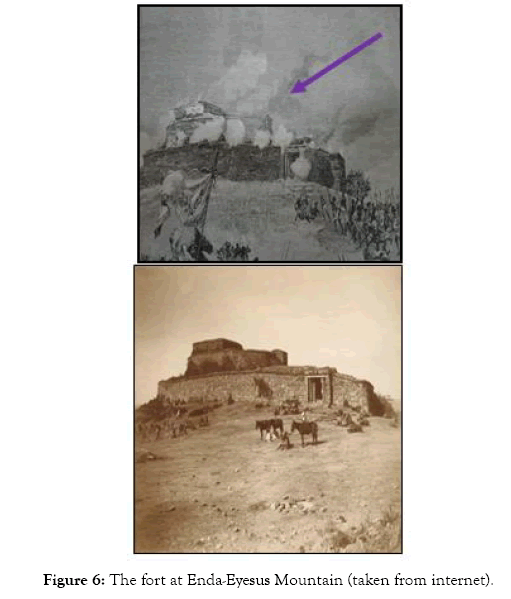
Figure 6: The fort at Enda-Eyesus Mountain (taken from internet).
May-Aneshti
May-Aneshti (the Woman’s water in Tigrigna) is another historical place which was a part of Enda-Eyesus battlefield under the hill (Figure 7). The Water has associated with Empress Taytu Betule. It is the famous “Siege of Mekelle” took place from January 07- January 20, 1896 during the first war between the modern Italian military and the Ethiopian patriotic. The military operation that happened on this site plays a decisive role for the retreat of the Italian forces in a disgraceful defeat here; segments of the Ethiopian army with the recommendation of Empress Taytu Betule (the consultant and wife of emperor Emmeye Menilik II’s) have besieged the Italians by cutting their water supply that was found in what is now May- Aneshti wittingly to leave out them in the fort. For this reason, the Italians had no option other than accepting the demands of the Ethiopians and left their fort for their northern retreat [13]. After this the fascist force were leave the place and moved to Adawa through Adigrat way Northwest of Mekelle city. Consequently, the water place was became a strategic military position and operation for the Ethiopian force with a victory. Currently, this site is fenced within the main campus of Mekelle University among no perceptible visitors.
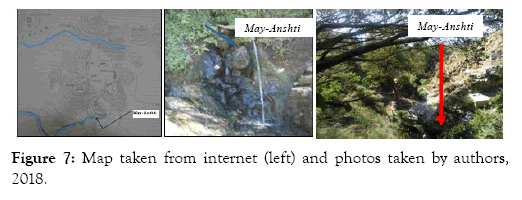
Figure 7: Map taken from internet (left) and photos taken by authors, 2018.
Contributions and opportunities of Enda-Eyesus battlefield as heritage tourism for the local economy
Heritage tourism creates major income and economic opportunity for the local communities [14-16]. It has the potential to create jobs and generate entrepreneurial opportunities for people from a variety of backgrounds, skills and experience [17]. The study area is a significant tourist attraction site. Because, it is a historical site that a big event happened at the blacks’ history in the World and it is national heritage. Besides historicalness, the site placed at the hill and more impressive to relax and visit all parts of Mekelle city. It can be best tourist destination and can provide job opportunities for the locals regarding income making alternatives from tourism industry. Lodge service can be a good opportunity in creating income source. Tour guide, product selling and development are job and business opportunities for the community through utilizing the heritage via tourism operation. And so, the locals can achieve benefits through developing hotels, restaurants, resorts, through marketing handcrafts and products, by giving security service, besides other direct employments. However, the locals have not been engaged in practical and have not been benefited from these opportunities (Table 1).
| Respondents response | Frequency | Percent | Cumulative Percent |
|---|---|---|---|
| Strongly agree | 67 | 95.71% | 95.71% |
| Agreed | 3 | 4.29% | 4.29% |
| Neutral | 0 | 0% | 0% |
| Strongly disagreed | 0 | 0% | 0% |
| Disagreed | 0 | 0% | 0% |
| Total | 100 | 100% | 100% |
Table 1: Survey conducted by authors, 2011.
The, above, sampled respondents were asked to rate their level of agreement for the statement Economic contribution of heritage tourism for the community at Enda-Eyesus battlefield. The results from the above table showed that, 67(95.7%) of the informants have been strongly-agreed and 3(4.28%) of the respondents have agreed concerning the local economic contribution of heritage tourism at the study area. According to the information gathered from the respondents, strongly-disagreed and disagreed percents of the finding are nil. So the result tells us, if there is destination developmental activities related to community inclusive heritage tourism, the communities will have job opportunity and will be economical developments through providing services for tourists through utilizing the cultural resource (Table 2).
| Respondents response | Frequency | Percent | Cumulative percent |
|---|---|---|---|
| Strongly agree | 60 | 85.71% | 85.71% |
| Agree | 10 | 14.29% | 14.29% |
| Neutral | 0 | 0% | 0% |
| Disagree | 0 | 0% | 0% |
| Strongly disagree | 0 | 0% | 0% |
| Total | 70 | 100% | 100% |
Table 2: The role of private and governmental institutions for development of heritage tourism.
The result on the table revealed that 85.71% of the respondents have strongly-agreed and 14.28% agreed that the private or governmental institutions have to have a great role and so far not played their indispensable responsibility to develop community inclusive heritage marketing at Enda-Eyesus battlefield. While no the respondents have diverged the issue of private and governmental institutions’ role in heritage tourism respectively. According to the information, the regional [Tigray] culture and tourism offices have not been attempted to develop the community’s involvement in to the industry and to increase the flow of tourists and exploit the benefit of the local community. Even, the institutional framework has identified been in a very pathetic manner with regard to heritage tourism. Lack of certain skills in the operation of tourism industry augmentation in the borough also hampers the progress of community inclusive heritage tourism.
Community’s awareness towards heritage tourism in the area
This is a historic place and has a heritage tourism potential as tourist attraction and be able to be best tourism destination. The community can also gain benefits from the industry if they are conscious. The participants were asked their knowledge towards the importance and benefits of heritage resources. Therefore, the diagram below shows the perception of the community toward tourism at Enda-Eyesus battlefield. As it presented on the chart, majority of the respondents (63.87%) are very poor in the understanding of heritage tourism remuneration and 14.84% are poor on the idea. Among the respondents, 12.90 % have excellent awareness and 3.226% have good awareness respectively. 5.161% of respondents were also medium with the idea. Therefore, the collected data indicates that, the community’s perception towards heritage tourism has a knowledge gap about its benefit through utilizing the place for tourist destination. Besides, their participation in the industry is very poor. This resulted, deprived utilizing of the site for economic and political development. Hence, effective strategy to aware the whole community members regarding the concept, benefit, and value of tourism in this historical battlefield is mandatory to empower them and needs more awareness campaign (Figure 8).
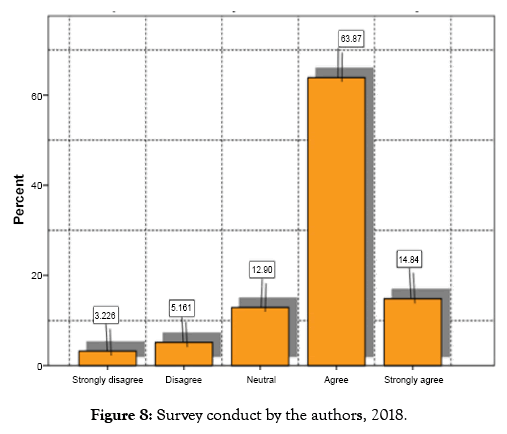
Figure 8: Survey conduct by the authors, 2018.
The infrastructures for heritage tourism development at the study site
The existence of tourism resources offers opportunities for the development of tourism business the infrastructure facilitates more [16]. Tourism infrastructures are the basis of tourism development, sustainability and utilization of resources and a significant determinants of tourist flow into destinations [11,18]. Facilities are the key elements in creating the impression among tourists. Inhabitants of developed countries, from where the majority of tourists originate, are used to modern transport infrastructure that enables high quality service [19]. These tourists prefer to maintain essentially the same comforts as at home while traveling. The study area is fitting for heritage tourism and can maximize the individuals, regional and national economy but indeed needs enough infrastructures and appropriate site demarcation as its, economic, historical and political values. The battlefield has not been as it should be demarcated. There is no ticketing and charge for visitors there at the place. Guiding manuals have investigated in very poor condition. Interpretation of battlefield heritage is very important to domestic and international tourists to re-imagine the events of the war in present as heritage similarly visitors will embrace and it needs analyst for tourists. The place is more suitable for lode services but it’s not accessible. Sign board is also an important communication to locate where it found and its distance but, has no the availability of information about the place. Walking towards May-Anshti and the fort is difficult due to poor walk ways. Hence, water supplies, road and transportation facilities, lodge and good cafeteria along with sanitation and waste management step ups are necessary here at the attraction. In fact, the city has good tourist facilities except its surroundings that to be the tourist attraction sites.
Promotion and marketing of enda-eyesus battlefield for heritage tourism
Heritage tourism marketing and promotion plays a significant role to attract tourists in to heritage destinations and to develop the national economy [4]. The promotion of tourist destination area is a key strategy that can lead to economic uplift, community development and poverty relief in the developing world [20]. Due to the globalization around the world the tourist destinations are also becoming highly competitive [21]. Enda-Eyesus battlefield is a significant cultural heritage for heritage tourism industry and has commemorative value as heritage about the 19th c colonist attempts in Ethiopia and its failure in Africa. Moreover, the place is fundamental for historical investigations regarding the 19th century’s colonialism in the continent. But, the current tourism and management scenario is found in a very poor as its heritage tourism potential. The battlefield is not yet well marketed and promoted for tourist destination with Medias even the magnificent battle of Adawa. There is no tourist map and information about the place has to access be from websites as tourism destination. This due the county’s political atmosphere (patriotism) and the scholars’ role in introduction of the historic place. The area needs; managerial, entrepreneurial and heritage marketing practices to ensure development of heritage tourism.
Techniques to develop community inclusive heritage tourism at enda-eyesus battlefield
To enhance effective sustainable heritage tourism at Enda-Eyesus battlefield, the community’s active participation is fundamental and consequential. The Participation of all stakeholders with various fields of expertise is key facet to support and encourage the development heritage tourism and maximize the benefits of the local community and as it advocate while a way of implementing sustainable tourism [22,23]. Involvement and participation of communities in the tourism industry can be viewed in the decision making process and in the sharing of tourism benefits [24]. It brings more economic benefits directly to the household level On the other hand. Once people are involved in the industry what they hold, they will consider themselves part of the idea and would hardly be constituted for tourism. This brings a sustainable heritage tourism development. Hence, the community has to be participating in the developing and planning process of tourism destination. Capacity for project administration, capacity for heritage resource management and utilization, capacity for product development and marketing are the important issues can improve by short trainings. Training and technical assistance is the other operation to aware the community and private sectors how to involve and utilize heritage resources and in order to aid the community throughout creating small business. Strengthening the community’s organization is also an important mechanism in order to increase economic benefits of the community from heritage tourism. Collaboration linking with local governmental institutions, experts, the population, and private sectors is the best mechanism to sustain and realize community inclusive heritage tourism development and destination advance operational activities. Hence, making linkages with governmental bodies and the private sector can also be effective [25]. Proper use/ budgeting of Human and finical resource are basic issues to develop community inclusive heritage tourism. Moreover, site preservation is a big issue for economic growth using the heritage because there will no tourism if the heritage will be maintained.
The study was focused on challenges of community inclusive heritage tourism development at Enda-Eyesus battlefield of the pre- Adawa victory in 19th c. Community inclusive in heritage tourism is a key approach to maximize their economic advantages and invent job opportunity. The victory of Adawa is the pride of black people all over the World. The victory is black over the white at the land of the Africa in Ethiopia. Menilek's victory at Adwa not only preserved Ethiopian independence in the era of the Scramble for Africa, but gave his country greatly enhanced international recognition and Enda-Eyesus battlefield is a pre Adawa victory during the struggle 1895-96. Enda- Eyesus battlefield is national heritage and has a potential to be tourist destination. It provides opportunities for the locals’ economy development from tourism industry and to maximize the country’s revenue. Finding of the study indicates that, the communities have not adequately benefited from opportunities due to confront. Some of the challenges are; lack of awareness how to generate income from the resource, lack of marketing and promotion of the site, the absence of infrastructures to accommodate and increase tourists, lack of cooperative linking, community involvement, and technical assistance work to develop community inclusive heritage tourism are identified in the investigation. Therefore, infrastructure must be established for better tourist destination development. The local communities have to be participated in tourism to develop heritage tourism at Enda-Eyesus battlefield. Training is the other operation to aware community and tourism bureaus have to be planned training programs in long and short phase about how to utilize the resources. Collaboration linking with local government, the population, and private sectors is the best mechanism to sustain and realize community inclusive heritage tourism development and have to be applied with experts and stakeholders for better tourism destination development and tourist allure. The battlefield has to be promoted using medias appropriately for tourism marketing.
Citation: Fetene GG, Weldesamuel GW (2020) Challenges of Community Inclusive Heritage Tourism Development in Ethiopia: Case Study in Enda- Eyesus Battlefield of the Pre-Adawa Victory. J Tourism Hospit 9:425. doi: 10.35248/2167-0269.20.9.425
Received: 27-Nov-2019 Accepted: 04-Feb-2020 Published: 11-Feb-2020 , DOI: 10.35248/2167-0269.20.9.425
Copyright: © 2020 Fetene GG, et al. This is an open-access article distributed under the terms of the Creative Commons Attribution License, which permits unrestricted use, distribution, and reproduction in any medium, provided the original author and source are credited.